Note
Ah yes Teraforming, the answer to if you don’t have any habitable space, just make your own.
//They do have plenty of space colonies, like O'Neil Cylinders and Bernal Spheres, but Harvest was the first attempt at terraforming a planet outside of the Solar System. It's definitely proven successful, although it's more Paraterraforming than actual terraforming.
//If they remove the worldhouse, it turns back into a sterile rock
0 notes
Note
And we go to using the Stellaris naming scheme for human colony worlds.
//As a man of science myself, I can tell you that scientists are just really bad at naming things : P
1 note
·
View note
Text
PLANET PROFILE: Harvest
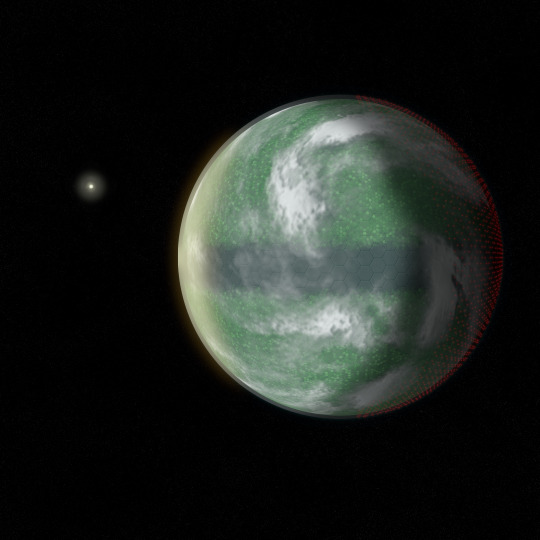
Orbiting Alpha Centauri B, Harvest, as it's colloquially known, was humanity's first foray into both paraterraforming of an entire world and the first attempt at large-scale agriculture outside the Solar System.
A small world in orbit around the K-type star, roughly halfway between Earth and Mars in size, Harvest was originally a barren rock with no water, no life and a thin atmosphere of toxic gases. The world was initially mined for minerals, but then a new project was considered thanks to its close proximity to its parent star.
This involved the creation of a worldhouse, an huge translucent sphere situated just above the Kármán line, which would serve to control the planet's temperature, shield the surface from cosmic radiation and provide a base of operations for the project.
Enclosed within this sphere, the planet's surface was mechanically eroded using lasers and grinders, creating soil that could then be infused with nutrients, while the atmosphere was artificially introduced using material from comets and nearby gas giants. The panels of the worldhouse can be lightened or shaded at will to encourage the development of wind and regulation of temperature, while clouds could be seeded to produce rains where they were needed.
Once this initial layer of topsoil was established, farming began on a massive scale. Within a few decades, the entire surface of Harvest became home to fields of crops, many of which are larger than whole countries back on Earth. These not only include food crops, but material ones such as cotton and medicinal ones such as willow.
Beneath the surface, vast cave systems are also home to farms of edible fungi and deeper flooded ones engaging in aquaponics. Harvest was designed as a self-contained testing ground for horticulture and agriculture, with many experiments visible from orbit.
The planet's equator is dominated by a large black belt, which may be mistaken for fire damage or even a body of water, but is actually a series of plants modified to produce black leaves and capture 99% of the light produced by the star. Seeds grown here have been sent to Proxima Centauri to see if they can grow under a red dwarf.
Harvest is sparsely populated by planetary standards, with less than 50 million residents both on the surface and in the worldhouse stations. Most of those on the surface either live in stationary communities resembling small farming towns on Earth or in mobile towns resting on enormous harvesters that run on Haber-Bosch reactors producing fertilizer for the fields. Settlements are never far from the space elevators tethering the worldhouse to the surface.
While many might view Harvest as a paradise, the planet's leadership is infamously strict. Because the biosphere is entirely artificial, as the world lacks any tectonics or water cycle, very few risks are allowed and unwelcome visitors are turned away. Should a serious threat arise, natural or artificial, the worldhouse is equipped with defensive lasers.
Anyone who wishes to visit Harvest must complete a long questionnaire, submit to thorough screening and are committed to 24-Earth month-long contracts. Of course, between the assistance from robots and high-quality medical care, it's not nearly as backbreaking as some might believe. Most who do work or settle there are people who prefer the quieter life and prefer to get their hands dirty.
Despite the strict regulations, Harvest is frequently visited by ships who seek to use the worldhouse's mass drivers for some extra acceleration to their destination. They're often given complimentary foodstuffs before being sent on their way.
With trillions of bushels of apples, grain bins, bales of hay, and countless billions of other crops produced every year, there's plenty to go around.
#ekpyrosis#my art#worldbuilding#worldbuilding art#agriculture#agri-world#farm planet#planet profile#space#scifi art#Harvest
1 note
·
View note
Text
Villain Profile: Iron Lung

The emergence of posthumans in 1951 brought with it a new revolution in biotechnology. Many prominent scientists, psychologists, biologists, physicians and others sought to use these to their fullest potential. One of them was Dr. Julius Leichtenberg.
Born in Hesse in 1937 and later immigrating to the UK, Leichtenberg was an aspiring neurosurgeon who attended the University of Oxford. His biggest influences were American neurosurgeon Robert White and Soviet organ donation pioneer Vladimir Demikhov.
Leichtenberg was fascinated by the idea of head and brain transplants, and believed it was possible to utilize this technology to save lives, whether it was preserving the brain or attaching it to a new body, either natural or artificial. The procedure had yet to be performed on a human and Liechtenberg and others were looking for willing subjects.
However, it was during this search that Leichtenberg, along with several other bystanders, were gravely injured in a fight between a posthuman criminal and police in the streets. The collateral damage left him so badly injured that being rendered quadriplegic was the best case scenario. It was more likely he would not survive.
Already a rather bitter man after facing criticism for his support of brain transplants, Liechtenberg's embitterment turned to spite and he decided to volunteer for his own work. With the help of thoroughly detailed notes and several assistants, he had his brain removed and preserved in solution and attached to a set of artificial sensory relays.
It would've been easy enough for Liechtenberg to simply find a donor body or have one grown for him and move on from there. But, after spending days, weeks and months fixating on his resentment- as well as possible unexpected psychological effects of being an isolated brain- he opted instead to pursue revenge.
The full details of what happened afterward is unclear, but Liechtenberg opted to have his brain preserved in a blast-proof canister and encased in an artificial body, which was then armed with various weapons and means for destruction. Early models were large, clunky and mechanical, which is where he earned his moniker in the press: "Iron Lung."
Iron Lung's primary M.O. is targeting posthumans, particularly those who try to use their abilities to make the world a better place, and either killing them or mutilating them to the point where they can no longer use them. He's shown no qualms about doing the same with other philanthropists, leaders, law enforcement or anyone else who gets in his way.
After numerous skirmishes, he's also gradually adapted his artificial bodies, upgrading them with new and better technology, weapons and equipment. He has now become a large, snake-like figure with a highly flexible body composed of synthetic muscle. He's also learned and employed a great deal of tactical skill, showing both proficiency in combat and the willingness to retreat when overwhelmed.
To date, no one has ever been able to capture him. The most that can be done is to cause him enough harm to force him to retreat and repair himself. With the only vital component of him being his brain, which is always hidden behind several layers of protection, the damage he can take is staggering. Efforts to stop him have gone so far have included RPGs, a Lockheed AH-56 Cheyenne and an FV4201 Chieftain tank.
He also possesses and artificial voice that retains his native accent, and while it sounds disturbingly even throughout (comparable to HAL 9000), the more damage he takes, the more this voice distorts until it devolves into a loud series of electronic whirs and blaring.
Because of the viciousness of his attacks and the nature of his existence, head and brain transplants remain a contentious subject, although a handful have been performed in the years between Iron Lung's emergence.
#the-helixverse#gene warriors#helix earth#oc#original character#my art#villain profile#Iron Lung#brain transplant#alternate history
4 notes
·
View notes
Note
This may be a stupid question but how do the Thai'Qul operate electronics without them being y’know shocked with extremely high voltage due to how conductive water is?
Quite simple, really: Fiber Optics!

While we primarily use conductive metals like copper for our wires, fiber optics- being essentially transparent tubes of glass- are the primarily means of transporting internet signals across the world. In fact, most of them are in the ocean.

Like other wires, conductivity and signal integrity are place thanks to layers of multiple material, mostly plastics, and they can get signals across the entire planet in seconds.
Fiber optics have only been around on Earth for about 80 years, but the Thai'Qul have had them much longer, although it took time before they were able to make use of them in the same way we did. While they didn't discover fire, they were able to forge materials through a combination of deep sea vents, natural fission reactors and intense pressure allowing new materials to be forged.
The short answer is that their tech is mostly fiber optic-based, and with no current directly exposed to water, there's no risk of electrocution.
It's the one design advantage when your planet is completely covered in oceans : P
1 note
·
View note
Text
Medusa-Class Battleship

Creator: Thai'Qul
Length: 798 Meters
Width: 378 Meters (Widest Point); 70 meters (Narrowest Point)
Propulsion: Nuclear Pulse Drive; Five Fusion Drive Thrusters
Crew Complement: 5,000-7,000 (Normal complement); 10,000 (Max. Capacity)
Radiator Type: Solid-State/Droplet
Armaments:
x8 40mm Point Defense Cannons (PDCs) (Aft)
x4 Cargo/Torpedo Bays (Aft)
x2000 5-kiloton driver warheads (Aft)
x4 Ultra-Relativistic Electron Beam (UREB) Cannons (Bow)
Interior
Because the Thai'Qul are an aquatic species, their ships are unique in being almost entirely filled with water. This pulls triple duty in protecting the occupants from intense G-forces, radiation and heat; providing resources for the fusion reactor and torpedoes, and in the event of a hull breach, lost water can be more easily retrieved than air. The consequence of this is that it increases the ship's overall mass, requiring more energy for any kind of acceleration or deceleration. This is also another reason for their ruthless pragmatism: the lack of air pockets outside the cargo sections prevents them from easily taking prisoners or taking larger ships aboard.
Creators
An average Thai'Qul male. Roughly 85% of the species is male, carrying out tasks for the rarely-seen matriarchs, who outsize them significantly. On ships such as the Medusa-class, prepubescent matriarchs- referred to colloquially as "Countesses"- serve the role of captains and admirals.
Strategic Overview
If there's any way to describe the Thai'Qul military doctrine, it would be ruthless pragmatism. Rather than engaging in widespread power projection, heavier ships are mostly concentrated within their own systems, while smaller vessels are the most commonly encountered. These represent the first line of defense, focused on patrolling defense perimeters.
Should a perimeter be broken and an enemy force infiltrate a Thai'Qul system, either by evading or destroying lighter vessels, this is when battleships such as the Medusa-class are deployed. This typically follows barrages of Thai'Qul frigates and corvettes, which will try to guide invaders into designated kill zones, where the Medusa-class will engage them at close range, such as near large asteroids, space stations or ring systems.
While these battleships lack high speed or fine maneuvering, they make up for it with powerful defenses and overwhelming firepower, particularly their UREBs. Once the invader's shields and other defenses have been exhausted, should they refuse to surrender, attacks from these beams will irradiate and effectively sterilize the target.
This is done because, rather than simply blowing up bellicose ships, the Thai'Qul will always try to salvage as much technology and information from them as possible, either to assess motivations or reverse-engineer whatever they discover. Of course, should a ship surrender instead, the Thai'Qul will gladly accept, taking the time to analyze captured ships just as thoroughly.
This doctrine has proven to be quite effective in multiple engagements and ensured invasions of their systems are rare.
Ship Diagram
The Bow Shield is a large dome entirely covered in ablative heat-resistant armor.
The nose of the craft houses the four UREB cannons, which cover a large hemispherical field. While the beams lose effectiveness over time or when fired at an angle, time dilation effects prevent them from completely dissipating over longer ranges. Maximum energy from the bremsstrahlung resulting from impact has been measured at over 5,000 Sieverts.
The UREBs are only possible via the battleship's length, where the linear accelerator (Linac) runs along the central axis of the ship.
The Medusa-Class doesn't have a designated bridge or command module, but instead 36 large windowless spheres, where most of the crew resides. Commands, controls and sensor readings are instead performed using holographic display interfaces that crew members can pull up at any moment. This ensures damage to one area of the ship will not compromise control, and that key staff can be moved into the interior.
The ship uses a combination of solid-state and droplet cooling with liquid lithium, firing the molten coolant into space, where it condenses into larger drops before being recaptured in a dish section for recirculation. Additional radiators vent excess heat to prevent the lithium from completely vaporizing. In times of duress, this coolant can be used as everything from makeshift flares to additional thrusters.
The aft section consists of a large octagonal cylinder, which houses bay sections designed to be drained of water so cargo, torpedoes and other craft can be sent into space. This is also where the ship's fusion reactor is housed.
The PDCs, nicknamed "Barnacles," allow the ship to fire at targets behind or beside the ship.
Contrary to popular belief, the piston supports are only painted blue and not transparent, though they are full of water to help cushion the impact following a pulse.
The pistons and their shock absorbers are attached to a set of electric motors, which extract a small, but not insubstantial amount of power from every pulse.
The Drive Cone is fitted with flexible rings and is even colored bright white to take advantage of as much radiation pressure as possible. Usage of this drive is why the battleship can't be used in a planetary orbit, as the risk of creating radiation belts poses a threat to orbital infrastructure.
#the-helixverse#ekpyrosis#thai'qul#spaceship#worldbuilding#my art#hard science fiction#hard sci fi#ship design#project orion#worldbuilding art#scifi art
22 notes
·
View notes
Text
ART DUMP

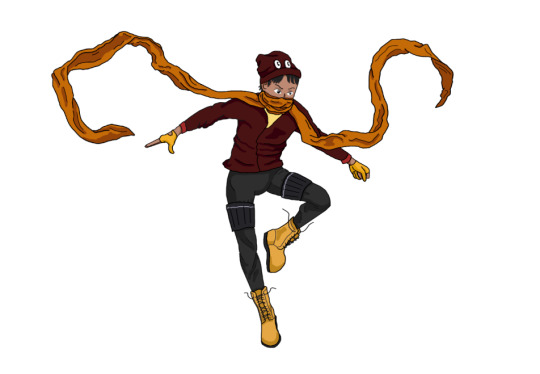



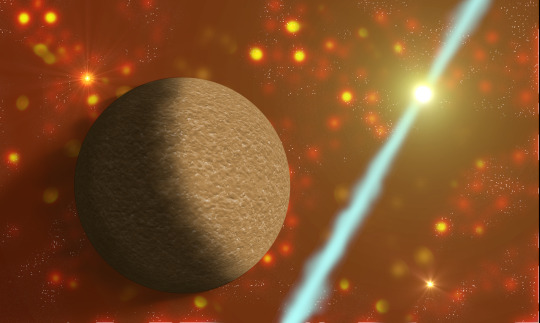

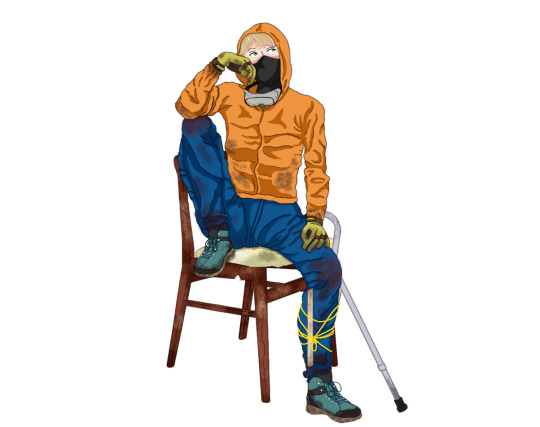

//Hey everyone! Sorry it's been a while, but here's some art I've made. Some of it is recent, some is from a few months ago and I don't think I ever shared it here
//Hope you enjoy!
#mod talks#the-helixverse#the helixverse#art dump#art#helix earth#ekpyrosis#gene warriors#ironstar#Ex Nihilo#my art
12 notes
·
View notes
Text
Hey, can y’all rb this if it’s okay to send you messages asking about your ocs, cause on god I wanna interact with y’all but I am terrified of being annoying lol
54K notes
·
View notes
Note
Hold on, does that mean Brianna could control DINOSAURS if they were brought back from extinction due to them being the ancestors of birds?
//Oh yeah, she absolutely could : P
1 note
·
View note
Note
Honestly I wouldn’t be surprised if Emmitt decided to journey to America because the Troubles were starting back home and he wanted no part of that conflict.
//Yeah, he's Jewish, but the cracks between Catholics and Protestants back home are already starting to show by the time he left ^^;
1 note
·
View note
Note
I know how much SCPs plays into your works so real talk; how much Sarkicism went into the Necocytes?
//Not much, actually. I didn't actually learn about Sarkicism until after I already decided on this stuff, so it's really more of a funny coincidence : P
//They definitely have the same vibe tho
1 note
·
View note
Note
So Neocytes are your sleep paralyse demons come to life.
//Sleep paralysis demons, insecurities, fears, anxieties, traumas, wishes, dreams, desires, imaginary friends, perceptions of other people, all of them can shape the creation of a neocyte. Not only from you, but from the collective thoughts of other people as well
//Not as a literal manifestation, but more as the shadow of these things, given physical form and a desire to exist on its own
//If you think your anxiety is bad, at least it isn't a giant spider creature trying to kill you : P
1 note
·
View note
Note
Ooo you reworked the Flatwood Monster into a Neocyte. I wonder if you done the same for other cryptids.

//Oh yeah, they all got sick afterward. The interesting thing is, in the wake of that first sighting, a lot of people have wondered whether they actually saw the neocyte first or if their sighting of something inadvertently created the Flatwoods Monsters
//With a lot of Cryptids sighted before 1951, it becomes a very Chicken or Egg-type situation
1 note
·
View note
Note
Aaaa so that’s the Red Zone mentioned in the short story was all about. Basically a more fleshy Tornado Alley.
//Yep, and tornadoes still happen here as well ^^;
//If you remember the ones from Joplin or El Reno, imagine also dealing with neocytes on top of all that. Living in the Red Zone is a challenge, but it's one a lot of people seem to welcome
1 note
·
View note
Text
Helixverse Lore: Neocytes

One of the unexpected consequences of the Biotechnology Revolution was the ability to harness the power of DNA. Even before the structure of the molecule was fully mapped out by British chemist Rosalind Franklin, experiments were being performed to study the lengths posthumans could manipulate the structure of life.
Following the end of the Korean War in July 1951, when hundreds of posthumans came forward, the medical community quickly began studying both the changes done to their bodies and the changes they could induce in others. While this was not an ability shared by all of them, some were able to alter the structure and behavior of cell cultures through touch, and sometimes even though just their presence.
Through this process, known as morphogenesis, posthumans could essentially rewrite DNA and RNA on a whim, which would lead to a cascade of changes throughout a culture. The results were referred to as “neocytes,” literally meaning “new cells.” While this was not a new term, having been used to describe cells produced by bone marrow, the term stuck.
Some of these changes also undid many preconceptions about Earth life, such as microbes with metallic cell membranes, to alternate nucleic acids, to even cell lines based on different bio-chemistries. Most of these were short-lived outside of controlled environments, but the possibilities with morphogenesis were seemingly endless.
However, there soon came unexpected consequences within the first year of testing.
Morphogenesis, while potent in and of itself, lacked the finesse of skilled hands in most cases. Individuals from ordinary or uneducated backgrounds often have no inherent understanding of how to craft changes in living cells. While certainly not impossible to teach, this meant the application was often disorganized and dangerous.
Morphogenesis was not a universally applicable skill. For reasons unknown, the ability does not affect all cell structures equally, sometimes not even in the same organism. Some are limited to a small set of genetically similar species, while others are limited to what they can perform on a wider range of organisms. On average, they can induce some effects on most types of cells.
Contrary to initial findings and popular belief, posthumans are not the only ones capable of morphogenesis. Their application of it is simply the most refined.
Most critically, morphogenesis can be used subconsciously, and is often stimulated by the emotional and mental state of the user. Collective contributions can also be made, both consciously and subconsciously, from others within the vicinity.
While the initial findings suggested it was possible to accidentally alter, injure, sicken or even kill others through this ability, the truth proved to be much more concerning.
NOTABLE INCIDENTS:
Organism 001- α: “Flatwoods”
On 12 September 1952, in the community of Flatwoods, located in Braxton County, West Virginia, a trio of children witnessed a bright object landing on a nearby farm, property of G. Baily Fisher. The boys, brothers Edward and Fred May, and their friend Tommy Hyer, returned home to inform Kathleen May. The initial four, along with local children Neil Nunley and Ronnie Shaver, and West Virginia National Guardsman Eugene Lemon, went to the Fisher farm in an effort to locate whatever it was that the boys said they had seen.
The group reached the top of a hill, where Nunley said they saw a pulsing red light. It was there that the group witnessed some sort of creature; eyewitness accounts described it as standing 3 meters/10 feet tall, with dark black or green skin, small arms, two bright red eyes and surrounding its head was a large hooded structure shaped like an Ace of Spades. When the creature made a hissing sound at them, Lemon dropped the group’s flashlight and they ran off.
Mrs. May called the local sheriff and deputy, who were skeptical of the situation but came to investigate regardless. While they made no sighting of the creature, the following morning revealed what appeared to be residue leading away from the site. The eyewitnesses gave their testimony to the local newspaper, whose initial speculation was that it was some sort of alien.
Analysis of the gummy residue in the was performed not long afterward, utilizing newer techniques posthuman experimentation had made possible. It was found that the substance, while initially thought to be oil or secretions from a UFO, revealed it to be Earthly in origin. In particular, it matched secretions made by salamanders in the region.
Two days later, at 5:58 PM on 14 September, a similar report was made by residents near Ross Fork, a small stream that ran beside Salt Lick Road. The sheriff and deputy were once again dispatched to the region, not expecting much, but quickly changed their tune when they also became witnesses.
The organism, dubbed the Flatwoods Monster, matched many of the descriptions from the first group of witnesses. It remained in place long enough for photographs to be taken and for eyewitness testimony to both verify and discredit many prior claims, as well as offering new insights.
Rather than a robe or large skirt, the creature’s body tapered downward into a massive muscular foot that expanded and contracted to allow it to move. The hood, which was able to fold inward like that of a Venus Fly Trap, offered protection for the creature’s head, and witnesses claimed the rim was also covered in many smaller eyes.
The flesh glistened in the low light, described by eyewitnesses as a mottled mess of black, dark yellow, orange, forest green and brown. The eyes were large, taking up most of the face, and reflected an eerie red light.
Organism M1: “Chunder”
(See Document 639-Σ: “1960 Commission Report on Sydney Attack” for full details)
TRAITS COMMON AMONG NEOCYTES
Inconsistent Anatomy- Because of the nature of their creation, particularly when the effects of morphogenesis occur subconsciously or through collective effort, neocytes often lack recognizable body plans. Organs and organ systems may be scattered between different parts of the body, but still retain enough functionality to allow the creature to survive.
This has resulted in two primary classifications of neocytes:
DEPENDENT- These neocytes lack one or more fully-formed organ systems, such as the digestive system, peripheral nervous system, immune system, or skeletal system. These tend to be fairly short-lived, either surviving on stored energy like that of a Luna Moth (Actias luna) or dying from a combination of injury and disease. Risk presented by Dependent-Class Neocytes tends to involve short-term risks.
AUTONOMOUS-These neocytes have enough functional organ systems to survive long-term in the local environment. This class presents a much greater threat, as they may be capable of reproduction and establishing a sustainable population. Even for those that don’t, the priority is to locate and dispatch these organisms to clear out infested areas.
Aggressive Behavior- Neocytes, on the whole, are highly aggressive, attacking and devouring other organisms on sight. This may continue until the neocyte has decimated the animal and/or plant populations of a local area, or until they have consumed so much material that their bodies fail. Some attacks are more territorial in nature, attacking and trying to drive residents away from an area they’ve come to inhabit.
Problem-Solving Skills- Despite the nature of their creation resulting in malformed forms, neocytes are often surprisingly intelligent. They will not deliberately plunge headfirst into danger, navigate environments well, can learn to avoid traps or open doors, recognize which sounds and symbols represent threats to them, and will hide for as long as possible when confrontation seems too risky.
Aversion to Silver- The ultimate weapon against neocytes is silver. The oligodynamic effect, a natural biocidal property of many metals, is most pronounced in objects containing silver; exposure to silver nanoparticles will kill bacteria on contact and is why utensils made of the material are self-sterilizing. When used against neocytes, their bodies can completely break down, experiencing mass apoptosis. In many cases, the neocyte’s body structure will completely denature and they’ll melt into a protein sludge. This result is observed in other oligodynamic metals, but silver has proven the most effective thus far.
DANGERS PRESENTED BY NEOCYTES
Since their discovery in 1952, neocyte populations have become entrenched in across the world. Infestations of them have ranged a few dozen to hordes of thousands at a time; so much so that reports of them can be made from the air and broadcast on the radio.
While the abilities of posthumans and genetic engineering has proven invaluable in restoring large amounts of environmental damage, neocytes have done just as much on their own, decimating animal populations in many areas. In some cases, infestations have proven overwhelming to authorities and too costly to clear out, and the region has to be quarantined.
Quarantined areas are often bombed with incendiary weapons to control the neocyte populations, but even this is only so effective. The areas are often effectively terraformed by the neocytes as local organisms are replaced by heavily mutated varieties.
The danger present by them has resulted in many countries providing citizens with weaponry such as swords, pole-arms, spears, and even modern bayonets to supplement guns. These are often laced with silver, requiring massive imports from nations with large stocks.
An unexpected benefit of neocytes is that, due to being composed of DNA from various species and producing large quantities of naturally-occurring proteins, polymers and compounds used in medicine, in-tact body parts such as venom glands, organs, bone marrow and blood have become highly sought-after. This has allowed “Monster-Hunting” to emerge and thrive as an occupation.
In terms of total continuous area, the largest concentration of neocytes is an area known as the Red Zone, a large section of the United States encompassing 2.62 million km2 of land between the Rocky Mountains and the Mississippi River. Large cities situated in and around the region have fortified themselves, setting up large walls and turret emplacements, while any trains and vehicles passing through the area require protective armor plating and bulletproof glass.
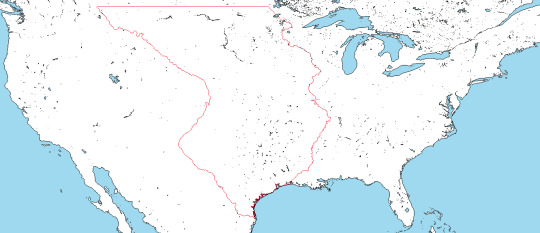
Borders of the “Red Zone” as of January 1968.
#the-helixverse#Alternate History#gene warriors#lore#United States#biopunk#flatwoods monster#neocytes
4 notes
·
View notes
Note
Hmmm a seemly average everyday man who just wants to help people, has a special power and gets into a group of superheroes, is Emmitt inspired by the namesake character from the Lego Movie?
//That was more of a funny coincidence, but an enjoyable one nonetheless : P
1 note
·
View note
Note
Ftr I’m not underestimating Brianna. Yes her power might be ‘control birds’ but much like how Aquaman’s ‘talk to fish’ extends to all kinds of sea life, Brianna’s powers don’t seem lame when a entire mob of emus are coming to your direction.
//You've made the correct choice there : P
//Not only can she control any creature with a bird-like nervous system, sensing what they can sense, but she's very creative with the ways that she handles them. She wasn't exaggerating when she said she knows everything that goes on in town

//She sees it all
1 note
·
View note